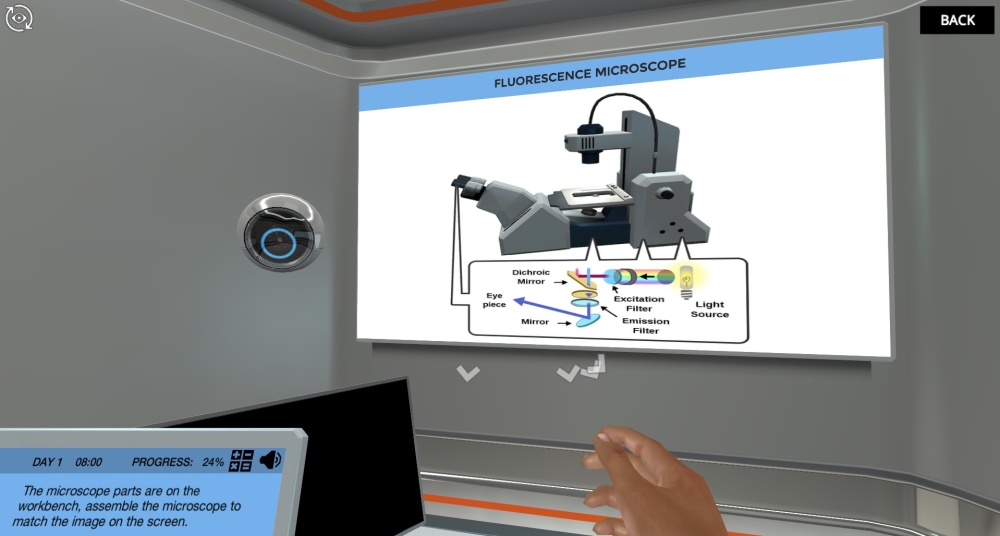Fluorescence Microscopy Virtual Lab
Enter the virtual microscope room to see inside a tissue sample. Learn how a fluorescence microscope can create a high contrast image and answer biological questions.

Try our lab safety simulation
Discover one of our 200+ learning simulations today
- Description
- Features
About the Fluorescence Microscopy Virtual Lab
This simulation, along with “Light Microscopy,” has been adapted from the original, larger “Microscopy” simulation.
Assemble the fluorescence microscope and discover how the key components help to create a high contrast image. In this simulation, you will learn how to use a fluorescence microscope to analyze an intestine tissue sample. You will discover what fluorescence is and what the applications and limitations of fluorescence microscopy in biology are. The sample has been prepared for you, your mission is to determine whether the cells in the intestine are infected with a virus.
Assemble the microscope
首先,你将组装荧光microscope and discover the function of the key components. Learn how, together, the parts of the microscope can magnify the image up to 1000 times with high contrast. You will also discover how molecules called fluorophores emit fluorescent light after being brought to a higher energy state and how you can label structures of interest in your sample with these fluorophores.
Analyze the sample
The sample contains three fluorophores, each labeling a different biomolecule. Using the fluorescence microscope, you can study the localization of the virus in the tissue. Can you find out whether the cells of the intestine have been infected by the virus? Finally, you and Dr. One will compare microscopy techniques. Is the fluorescence microscope the one microscope to rule them all?
RELATED SIMULATIONS
Light Microscopy
Microscopy
Enter the virtual microscope room to see inside a tissue sample. Learn how a fluorescence microscope can create a high contrast image and answer biological questions.
At the end of this simulation, you will be able to...
- Understand the basic principles and practical aspects of fluorescence microscopy
- Explain the function of different parts of the fluorescence microscope
- Optimize fluorophore choice
- Describe the application and limitations of fluorescence microscopy in biology
- Understand the need for staining
Length: 25 Minutes
Accessibility mode: Not available
Languages: English (United States)
HS-PS1-3
10.1 Fundamentals of organic chemistry
10.2 Functional group chemistry
20.1 Types of organic reactions
Unit 2: Ionic Compounds Structure and Properties




